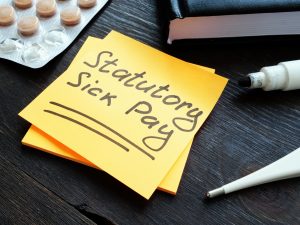Introduction
Partnerships are a popular form of doing business and the tax rules apply to all three types of partnership: a general partnership, a limited partnership and a limited liability partnership. The differences between these concern the legal liability of the partners.
As the COVID-19 pandemic has affected partnerships even more so than other businesses, because partnerships tend not to have large cash reserves, we examine how to deal with a trading loss within a partnership.
Partnership trading losses are computed in the same way as profits. Once the partnership loss has been computed, it is allocated between the partners in accordance with the profit sharing ratios for that accounting period.
If the partnership makes a loss, once the loss has been allocated, each partner is then able to claim loss relief based on their own personal circumstances. There is no concept of a ‘partnership loss’. The loss belongs to the partners and loss relief claims are made individually.
For partnerships continuing in business, and partners continuing in partnership year after year, losses are relieved in accordance with the relevant income tax loss relief rules.
Once the loss has been reallocated then each partner is free to do with their share of loss what is appropriate for them.
New partnerships or joining a partnership
Losses incurred in any partner’s first four tax years as a partner can be carried back against that partner’s other income of the three tax years before the loss was incurred, using the income of the earliest year first. The loss can be set against total income of the earlier year.
Leaving a partnership or closing a partnership (Terminal loss relief)
Where a partner has a loss incurred in that partner’s final 12 months as a partner, it can be carried back against partnership profits from the same trade. The set-off is against the tax year in which the cessation occurs and the three preceding years, taking the latest year first. This is often called terminal loss relief and, unlike opening years loss relief, the loss can only be offset against profits of the same trade of the earlier years.
Sideways loss relief
The most common use of partnership losses is sideways loss relief which is an offset of losses against total income of the same tax year or total income of the previous tax year. The loss can also be offset against total income of both of those two years in which case the partner can elect which year the loss is first used against. If the partner is in the early years or the last year of a trade then sideways loss relief can be claimed in addition to opening years and terminal loss relief, described above.
No partial claims are permitted so it is not possible to restrict the loss relief to the taxable income only and retain the benefit of personal allowances, thereby increasing the losses available to set against income in other years. It is an all or nothing claim.
The claim is not mandatory and the partner can decide not to make it. This would be the case, for example, if the income is already covered by the personal allowance so there would be little point in making the claim.
Offset against Capital Gains
It there is no income to be allocated against the trading loss in the current tax year or the preceding tax year, then a partner can offset the loss against capital gains of the same tax year as the loss is recognised and the previous tax year.
• The gains can be from the disposal of any assets, not just business assets.
• Claiming the relief may waste the annual exemption for CGT, because the relief cannot be restricted to avoid this.
Loss carry forward
If a partner’s share of loss is not relieved against other income, it can be carried forward and set against their share of the first available profits of the same trade, but not against other income.
Partnership loss restriction
There are restrictions on the use of losses to set against other income in the following circumstances:
• The partnership’s trade is not conducted on a commercial basis with a view to making a profit.
• The trade is farming or market gardening and a loss has been made in each of the previous five tax years.
• The partner spends on average fewer than ten hours a week involved in the partnership trade (but not a profession or vocation).
These rules are quite complex and we will not go into them further here.
General restriction on income tax reliefs and losses
The total amount of certain income tax reliefs, including partnership losses, that can be used to reduce total taxable income is limited to the higher of £50,000 or 25% of the taxpayer’s adjusted total income.
SRC-Time are one of the South East’s leading accountancy firms in advising individuals and businesses in all aspects of their accounting and tax affairs and we are able to assist in any issue raised above.
Our expert team is available to provide you with advice and can be contacted on 01273 326 556 or you can drop us an email at info@src-time.co.uk or speak with an account manager to get any process started.

